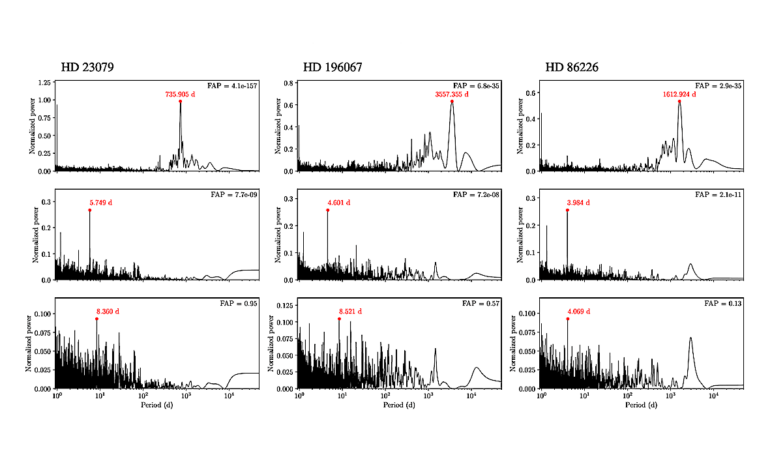New Discoveries in Inner Planets Challenge Theories on Giant Planet Influence

Recent research has provided new insights into the relationship between outer giant planets (OGPs) and inner light planets (ILPs) in various planetary systems. A study led by Jean-Baptiste Delisle and colleagues has made significant strides in observing the occurrence of ILPs around stars with and without OGPs. The findings reveal three new detections of ILPs, which may challenge existing theories regarding the correlation between these two types of planets.
The investigation, part of a long-term observational program utilizing the CORALIE, HARPS, and ESPRESSO spectrographs, aims to enhance understanding of planetary system formation. While previous studies have suggested a strong correlation between OGPs and ILPs, the latest results indicate a different narrative. The research team has detected a planet with a mass of 8.3 Earth masses orbiting HD 23079 every 5.75 days, a 10.4 Earth mass planet around HD 196067 orbiting every 4.6 days, and a 7.5 Earth mass planet confirmed around HD 86226 with a period of 3.98 days.
Research Methodology and Observational Strategy
To ensure rigorous data collection, the study emphasizes the importance of sample homogeneity. The team carefully selected stars based on their properties and maintained a consistent observing strategy throughout the research. This methodical approach is critical in comparing systems with and without OGPs, as previous attempts have suffered from small sample sizes and varied methodologies, leading to conflicting results.
While the current analysis is preliminary, the relatively low number of ILP detections in the OGP host sample raises questions about the previously accepted strong correlation. The observations suggest that the presence of OGPs may not be as influential on the formation of ILPs as once thought. A comprehensive statistical analysis will follow in subsequent studies, further investigating these findings and their implications for planetary formation theories.
The work has been accepted for publication in the journal Astronomy & Astrophysics and marks a significant step forward in the ongoing exploration of planetary systems. As the research continues, it promises to refine our understanding of how different types of planets interact and influence one another in the cosmos.
The findings from this study highlight the dynamic nature of planetary science and the need for continued observation and analysis to unravel the complexities of planetary system architecture. By challenging established correlations, this research opens new avenues for investigation and encourages a re-evaluation of existing models of planetary formation.
For those interested in the detailed findings, the full study is available with the citation: arXiv:2509.26232 [astro-ph.EP], submitted on September 30, 2025.






